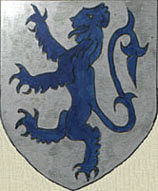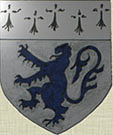|
How Wesleyan Methodism came to Skelton in Cleveland.
|
|
The following extract is from a book called "A Study in Origins." by William George Taylor. He was a Methodist minister, who left this area in 1870 as a missionary.
|

The first Wesleyan Methodist Chapel in Skelton. Built 1814.
|
On my father's side I am a Methodist of at least the fourth generation, probably of the fifth.
My father's birthplace was Skelton-in-Cleveland, then (before the discovery of ironstone) a lovely straggling village, two miles from the coast, at what is now the fashionable watering-place of Saltburn-by-the-Sea.
Skelton was several times visited by John Wesley [1703 to 1791].
Although we have no record of his having preached in the village, yet on nine occasions he preached with remarkable results following in the adjoining market-town of Guisborough.
On Sunday, July 8, 1759, Mr. Wesley writes of his first visit:
'From Stokesley' (where he had preached on the green in the morning) 'I rode to Guisborough, at the foot of the mountains. The sun would have been insupportable, but that we had a strong wind full in our face for the greatest part of the day. At twelve we had a lovely
congregation in a meadow near the town, who drank in every word that was spoken as the thirsty earth the showers.'
|
That same night he preached at Robin Hood's Bay, sixteen miles farther on, passing through Skelton en route.
It was probably at this service that some of my forefathers (the Taylors and the Shemelds) first heard the great evangelist.
At any rate, about that time several of them were converted.
My great-grandfather, Thomas Shemelds, was born at Skelton in the year 1763, and his wife Elizabeth in the year 1761.
[He is recorded as a Tailor [spelt Taylor] in 1801 and in 1814 as "Thomas & Son, Tailors". He was one of the Skelton Overseers of the Poor in 1809.]
Both Thomas and Elizabeth were class-leaders, probably appointed by John Wesley himself. They lived blameless and earnest Christian lives, exerting a remarkable influence in the district.
Of the family of five sons and two daughters, four were local preachers and one a class-leader.
An original letter written by George, a son of one of the local preachers, and bearing date 'Stokesley, April 26, 1825,' lies before me. It is long, filling four pages of foolscap closely written, and is an answer to a letter written by his sister.
Letter-writing in those days was evidently a luxury not often to be indulged in. Here we have a carefully elaborated statement of the great doctrine of personal regeneration. If he preached as he wrote, I am in doubt as to his acceptability. But there! people were different a hundred years ago; they were not out of patience with long sermons.
My grandfather, William Taylor, was born in Skelton in the year 1790, and was for some years a tower of strength to the rapidly growing Society.
It was in his time that a long fight was commenced to secure a site upon which to erect a meeting-house.
The Squire of the Parish was hostile to the Methodists, and every approach was repulsed.
[The Squire of Skelton at this time was John Wharton, who squandered his Aunt's fortune in re-building the Castle and bribing the electorate of Beverley to become their MPl.]
At length there came a preacher to the circuit who mixed a little of the wisdom of this world with his devout praying and earnest preaching, who determined that a chapel should be built.
The Society was summoned to prayer. After much counsel and more pleading with God, the preacher resolved to beard the lion in his den.
In a few hours he returned from the Castle with a smiling face.
'Thank God,'said he, 'we can set to work and build our chapel. The squire has agreed to give us the land we want.'
In reply to astonished questionings, it transpired that at first the great man was as haughty as ever in his refusal.
'No, no; I want none of you Methodists in my village. Why cannot you all be reasonable and attend the church?'
The wily parson was aware that just at that time the old squire was anxious to secure a much-coveted position of authority in the county.
The election was to take place at York. Hints were thrown out, at first distant and obscure, that certain Methodists at head quarters were men of influence.
The bait took. At first the old fish nibbled, and ultimately withdrew all his opposition to the building of the chapel on the understanding that these 'men of influence' did not oppose his candidature.
At once the work was started. Even the squire helped in the quarrying of the stone and in drawing it to the site.
Soon, I believe in the year 1814, the little stone chapel was opened. It was in that building that years afterwards I did much of my 'prentice' preaching.
William G Taylor returned to Skelton to preach in 1912 and commented on the change in Chapel attendance:-
"But what a change. With a population four times as large, the congregation was smaller than that of half a century before."
A much larger Chapel was built in 1868 and at times was full to overflowing.
Sadly today it is being converted into flats.
|
|



